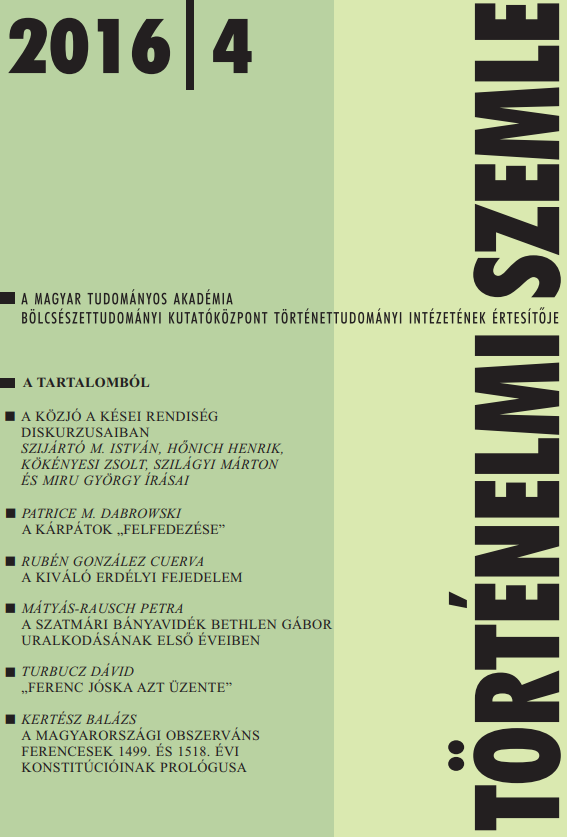A Kárpátok „felfedezése” - Síkvidékiek és hegylakók találkozásai a 19. században
“Discovering” the Carpathians. Encounters between Lowlanders and Highlanders in the 19th Century
Author(s): Patrice M. DabrowskiSubject(s): Geography, Regional studies, Environmental interactions, 19th Century, Tourism
Published by: Magyar Tudományos Akadémia Bölcsészettudományi Kutatóközpont Történettudományi Intézet
Keywords: Carpathians; 19th Century; tourism;
Summary/Abstract: In the midst of what used to be called Eastern Europe lie the Carpathian Mountains, next to the Alps the dominant mountain range in this part of Europe. They are wild, extensive and mysterious, shaped by high peaks and green valleys, dense forests and lush meadows, fast flowing streams and deep lakes. The focus of this article are the Carpathians or, more precisely, the “discovery” of individual segments of this long and diverse mountain range – including the Tatras and Eastern Carpathians – for purposes of tourism. When exactly did these two segments of the Carpathians begin to be modern? By whom and for whom were they “discovered”? How did these regions develop after their “discovery”? Did the mountains represent a national as well as a natural environment, or were they of only a local or regional (and not national) significance? This article examines encounters of lowlanders with the highlands and highlanders over the course of a half-century. Encounters took place before the First World War in a region that at the time belonged to the Habsburg Empire and today is located in Poland and Ukraine: that is, former Galicia. First, the “discovery” of the Tatra Mountains and their indigenous inhabitants, the Górale, by Poles in the last third of the 19th century will be addressed. Next comes a no less interesting encounter, that of the “discovery” of the Eastern Carpathians and the Hutsuls by Poles, but also, in the first decades of the 20th century, by nationally conscious Ukrainians. I argue that, in the period under investigation, the mountains paradoxically served as a source of inspiration for these two quintessentially lowland nations.
Journal: Történelmi Szemle
- Issue Year: 2016
- Issue No: 04
- Page Range: 555-564
- Page Count: 10
- Language: Hungarian

